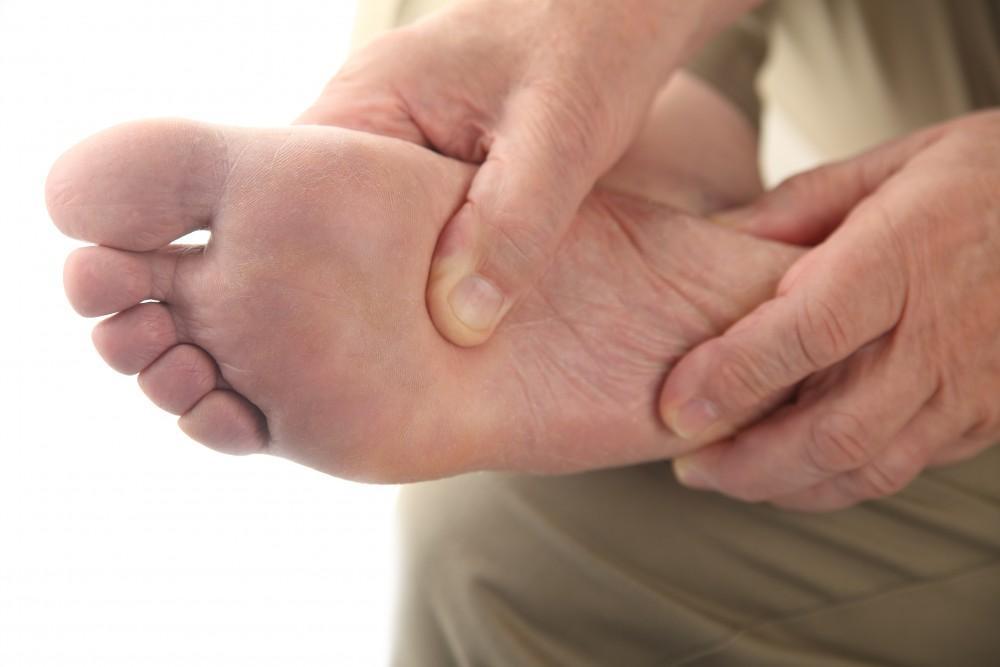Tips From a Podiatrist – How to Avoid Summer Foot Problems
As summer approaches, the warm weather brings many fun activities like hiking, beach-going, and outdoor concerts. Unfortunately, it also brings an increase in foot problems caused by a change to our footwear.
During the summer, wearing flip-flops and other backless shoes can make our feet more prone to blisters, cracked heels and a host of skin and nail issues. Here are some tips to avoid these common summer foot problems.

Blisters
Summer is a great time to wear sandals and go on hikes but these shoes can lead to blisters if you’re not careful. Blisters are the result of too much friction between your feet and your footwear. When this happens fluid forms to protect the area, often forming a painful bubble.
The easiest way to prevent blisters is to use a moisture control product to keep your feet dry. Moisture is the leading cause of blisters so it’s important to take steps to prevent it. Moisture wicking socks and a dry breathable shoe are also essential. Podiatrist Thornleigh can help you find the right socks and shoes for your foot type.
If you do get a blister it’s best to treat it early with a lubricant or small bandage to avoid it getting worse. Do not pop a blister as this can lead to infection. Instead, a podiatrist can drain it safely.
To reduce the risk of hotspots during your summer activities, you can do several things including wearing a hat, taking a shower or bath before walking, and doing toe exercises such as making ankle circles. You can also apply a foot powder to help absorb sweat and a light covering like moleskin or felt padding to help with friction. In addition, you can see a podiatrist to treat foot deformities that can increase your risk of blisters such as bunions and hammertoes.
Cracked Heels
The warm weather brings a return to flip-flops and backyard barbecues but it also can bring on foot problems. Often these summer-related issues occur because we spend more time in open shoes, such as sandals and flip-flops, or we increase our activity level after a long winter. This increased activity and exposure to the sun can exacerbate existing conditions such as cracked heels.
Cracked heels are painful, and can also lead to a serious infection if not treated properly. They develop when dry, thick skin on the heel begins to crack or break. When this happens, the healthy skin underneath is exposed and can become infected. Moisturizing your feet daily can help prevent cracked heels by keeping them hydrated and soft. If you notice cracked heels that don’t improve with over-the-counter foot care products, contact a podiatrist Glenhaven for treatment.
To avoid cracked heels this summer, make sure your footwear provides support and don’t wear flip-flops or bare feet for extended periods of time. Instead, opt for shoes with good arch support, and a wide toe box to accommodate your toes. Inspect your feet daily to look for early signs of cracked heels and don’t forget to moisturize!
Ingrown Toenails
Summer is the time for vacations, beach walks and outdoor concerts, but it also means exposing your feet to sunburn, fungal infections, painful ingrown toenails and more. While the heat can be a factor, many of these foot problems are preventable by taking some simple steps.
Ingrown toenails are nails whose corners or sides dig into the skin around the nail grooves, causing irritation and sometimes infection. These occur most often in the big toe, and can be very painful. Soaking your feet in soapy water and cutting your toenails straight across may help, but the best solution is to prevent them from occurring in the first place. Wear well-fitting shoes with plenty of room for your toes, and avoid tight, pointed or high-heeled shoes, which are the most common causes of ingrown toenails.
If you notice your toenails starting to become ingrown, soak them in a tub of warm water with Epsom salts or anti-microbial soap for a few weeks. This should loosen the toenail and make it easier to cut straight across. If the toenail continues to grow ingrown, apply an antibiotic ointment and wrap it with a bandage. If home care doesn’t help, see your family doctor, podiatrist or dermatologist for treatment, which may include removing the ingrown toenail. This is a fairly straightforward procedure, but it is best done by a professional to decrease your risk of infection.
Foot Pain
Foot problems can put a damper on summer activities. The combination of heat and sweat, along with changes in your foot care routine, can lead to a variety of painful foot conditions. However, a few simple fixes can keep blisters, hotspots, fungus, and swelling away from your feet so you can fully enjoy the season.
Blisters are a common problem that occurs when the top layer of skin becomes irritated due to friction or pressure. When this happens, the skin will start to form a bubble, which can then fill with fluid. It is important to not pop these blisters as this can cause an infection. Instead, use a blister pad or wrap to protect the area and let it heal naturally.
Another common summer foot problem is cracked heels. This can be caused by wearing shoes with inadequate support or walking on hard surfaces. It is also important to apply a moisturizer to your feet daily.
The best way to avoid summer foot problems is to see your podiatrist regularly. A podiatrist has the education, training, and experience to diagnose and treat a wide range of foot conditions. In addition, seeing a podiatrist can help prevent more serious problems from developing in the feet, such as diabetes and nerve or circulatory disorders. In the end, your feet carry you everywhere, so take good care of them!




